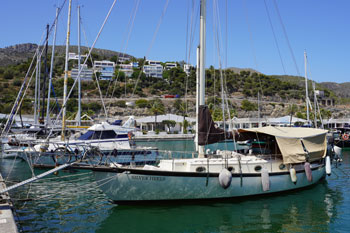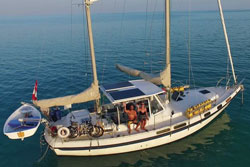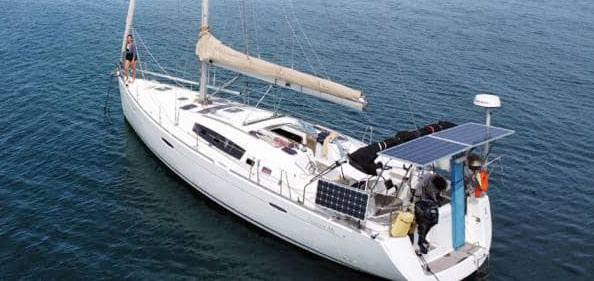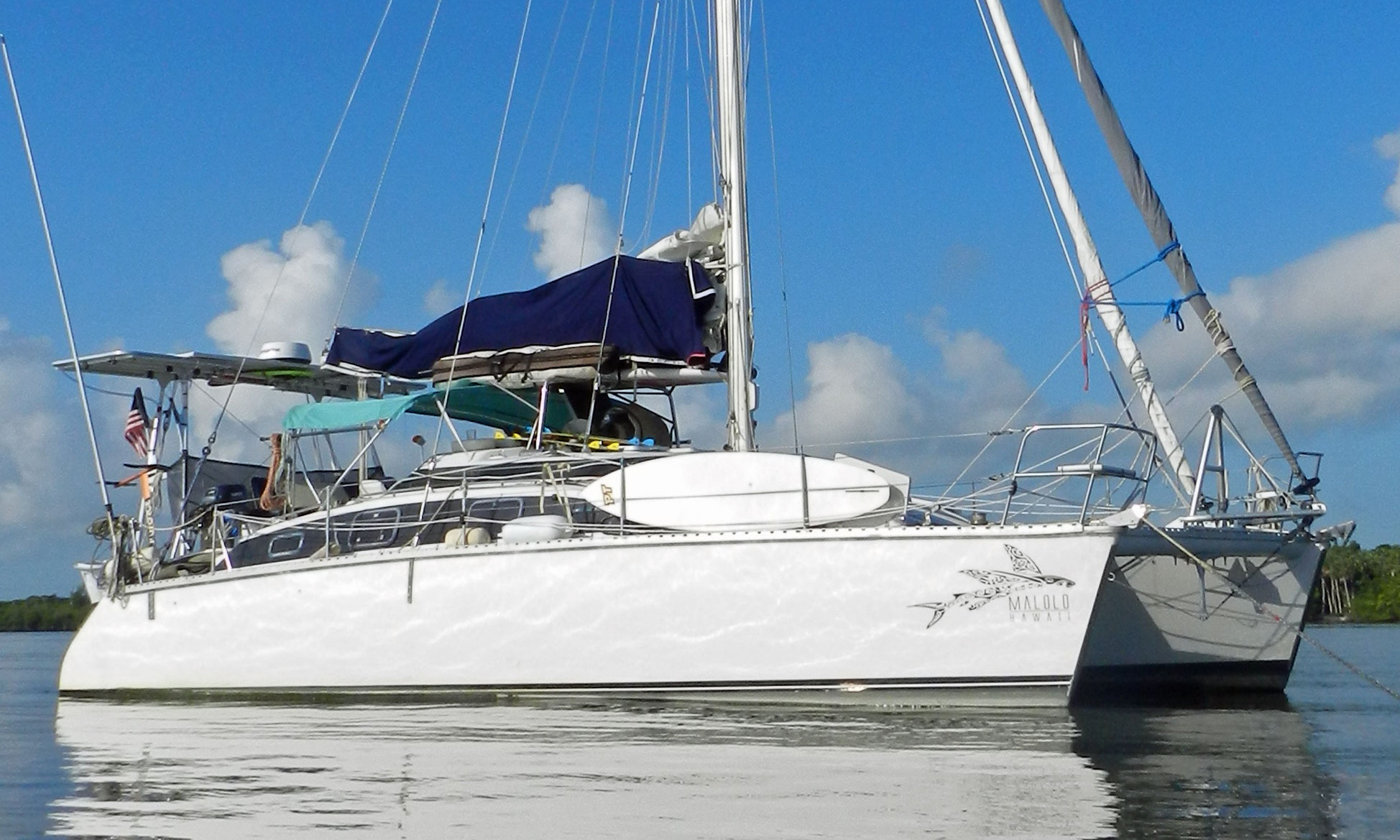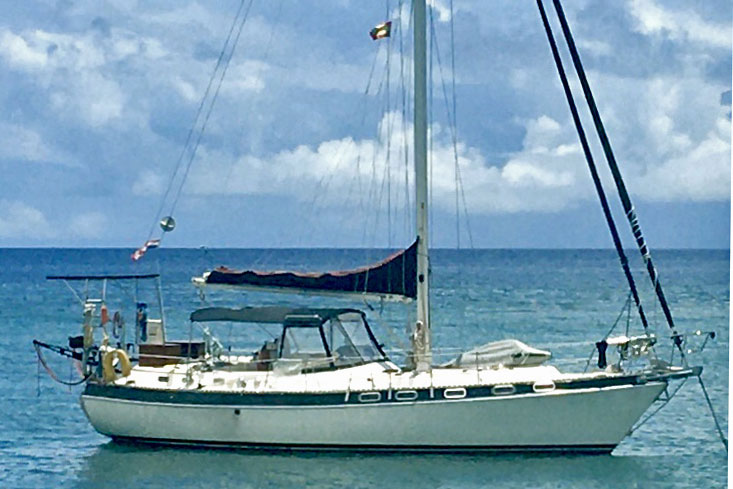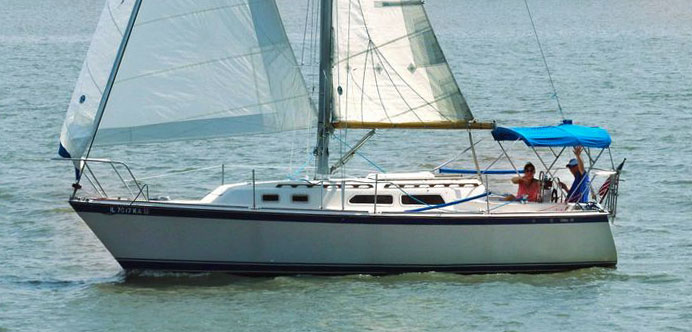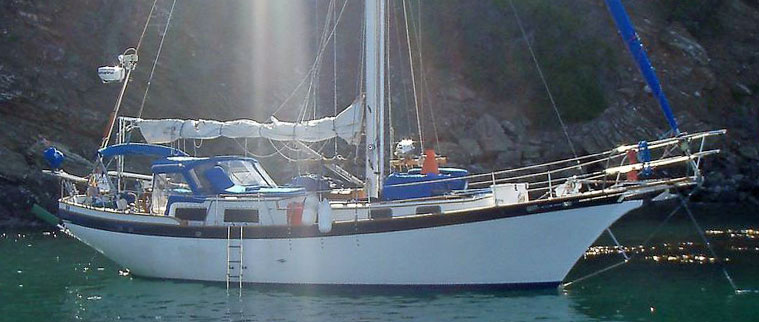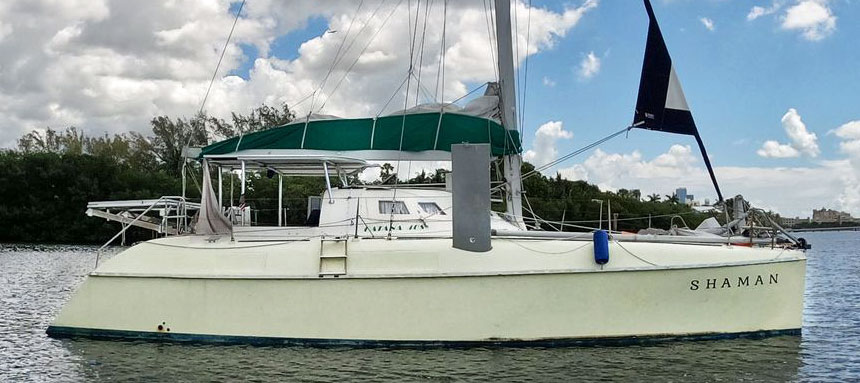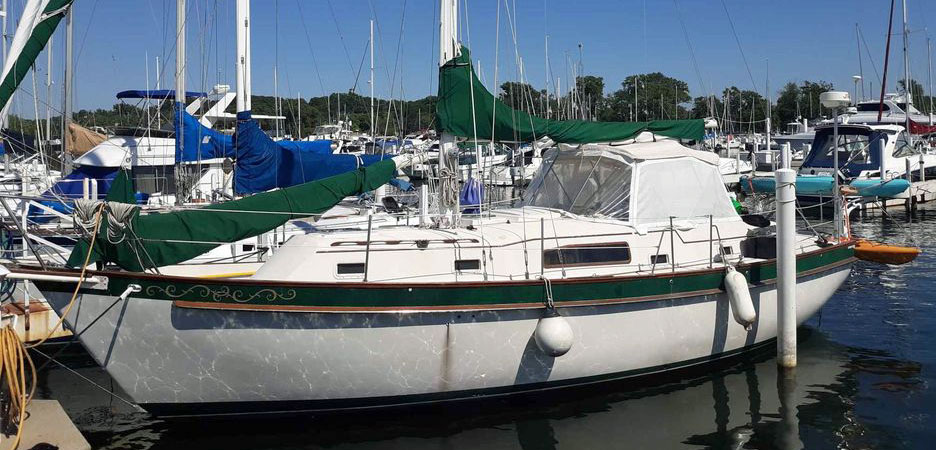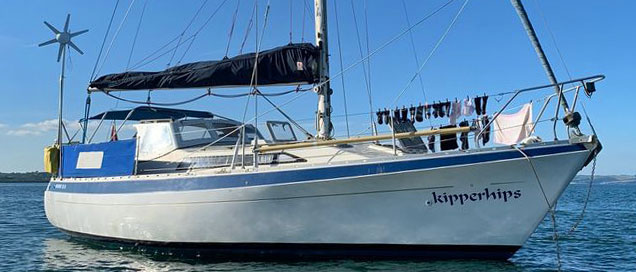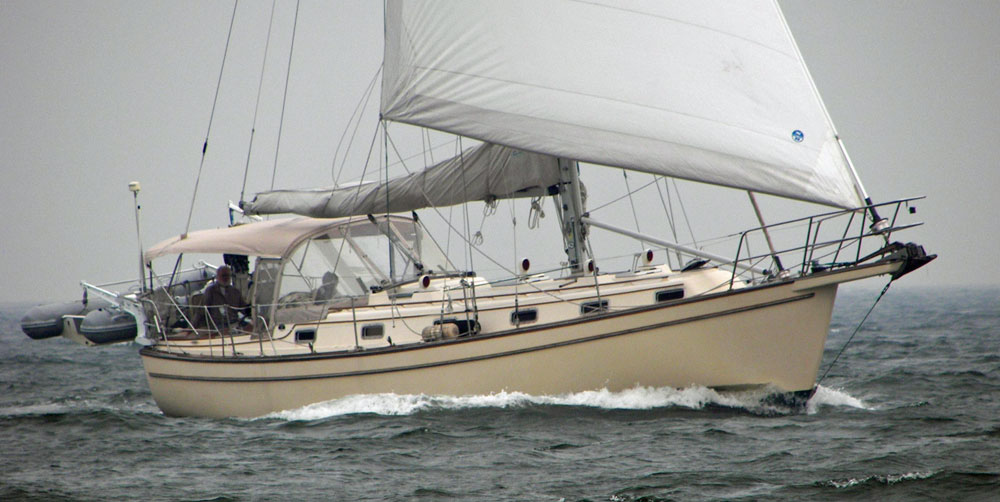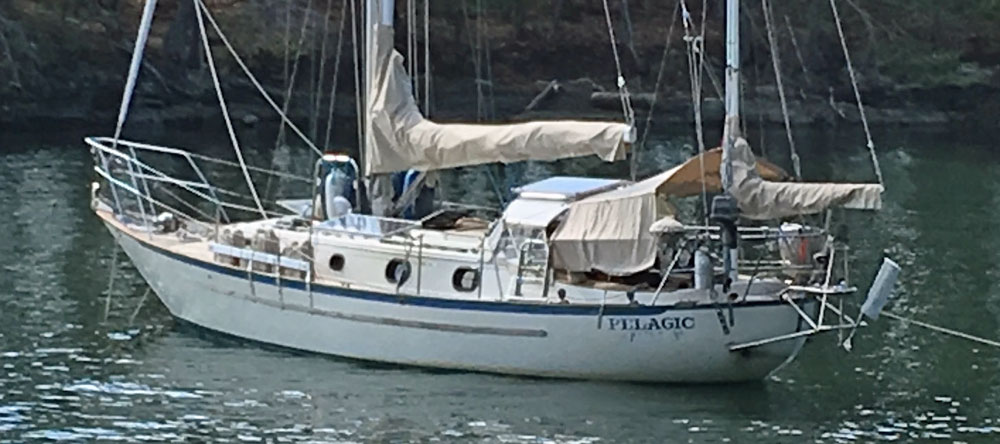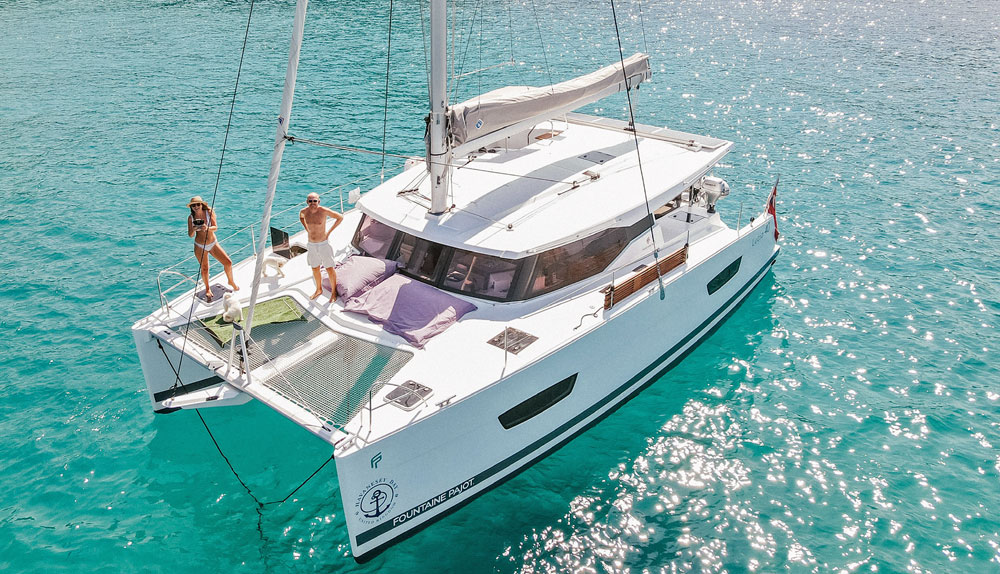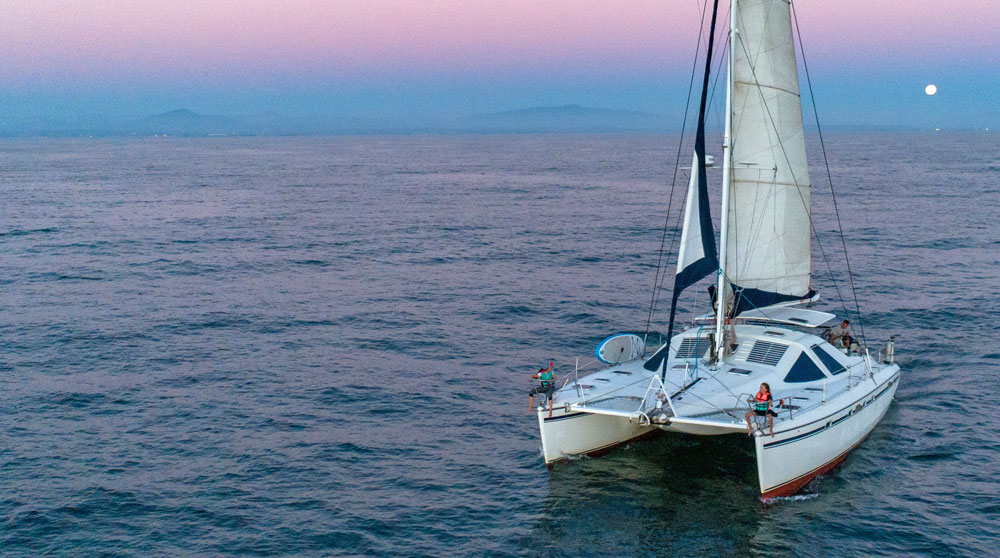Hi
The Sailboat Cruiser
The Sailboat Cruiser is the occasional newsletter of sailboat-cruising.com and sets out to bring you the news, views and general musings of the writer - Dick McClary, a sailboat cruiser and creator/owner of sailboat-cruising.com.
If you enjoy this newsletter and feel that any of your friends might too, please feel free to forward it to them.
If one of your friends did forward this to you and you like what you read, please subscribe by visiting
The Sailboat Cruiser.
The Sailboat Cruiser #74
October 2022
What's in This Issue:
Most of us are familiar with the names allocated to sleeping berths on sailboats, including:
- V-berths, which are to be found in the tapering forepeak cabin and are pretty much uninhabitable in anything of a sea;
- Settee berths, which as the name suggests are the seats for sitting at the saloon table. Often they can be pulled out by a few inches when in bunk mode, to create more width for the slumbering occupant;
- Pilot berths, which are permanent berths outboard and above the settee backs. These are probably the best bunks of all for daytime sleeping as they don't interfere with the normal use of the cabin;
- Quarter berths, which are located under the outboard edge of the cockpit. Whilst out of the way of cabin traffic, they tend to be poorly ventilated and can be particularly hot and noisy when under power. Getting in and out of them requires a degree of gymnastic ability.
A less well-known variety is the Pullman
berth. So what's a Pullman berth, and which sailboats have them?
Well, the Pullman berth is a double berth cabin between the saloon and the forepeak. Usually a head is installed in the forepeak just aft of the anchor locker. In a lumpy sea only a skilled rodeo cowboy would be at home in a head in this location, which means that such a layout is only successful in a sailboat large enough to have a second head further aft.
The berth is not on the centreline, butting up to one side of the hull. Only the inboard occupant will have easy ingress and exit meaning that, in the interest of social harmony, the occupant with the most capacious bladder should take the outboard side.
Probably the best known cruising boat with a Pullman berth is the
Island-Packet-38
but others include:
- the Baba 38;
- the Catalina 42;
- the Hans Christian 33;
- the Passport 40;
- the Hunter 41.
The Displacement/Length Ratio and the Sail Area/Displacement Ratio are design ratios widely used to assess the performance of monohull sailboats, but the equations from which they're derived don't work for catamarans - but the Bruce Number apparently, does.
The Bruce Number = A0.5/D0.33, where A is the sail area in ft2 and D is the displacement in pounds, which can be written as
The Bruce Number (BN) = The square root of the sail area divided by the cube root of the displacement.
Conventional wisdom has it that
- a BN of 1 is generally accepted as the dividing line between so-called slow and fast multihulls;
- a catamaran with a BN of less than 1.3 will be slow in light airs;
- a catamaran with a BN of 1.6 or greater will need to be reefed often in offshore cruising conditions.
The sail area is calculated as the area of the 100% fore-triangle plus
the triangular area of the mainsail. Mainsail roach is normally ignored as is the additional area of an overlapping headsail so it's immediately obvious that this metric has its limitations.
Neither does the BN take account of waterline length so it can only predict relative performance - not actual hullspeed.
But the Kelsall Sailing Performance is another performance indicator which does take account of waterline length and therefore predicts hullspeed, ie
Kelsall Sailing Performance (KSP) = 0.5 x (L x A/D)0.5 which can be written as
Kelsall Sailing Performance (KSP) = One half the square root of the product of the waterline length and the sail area divided by the displacement.
The higher the KSP number the faster speed prediction for the catamaran. A catamaran with a KSP of 0.6 is likely to sail at 6 knots in 10 knots of breeze, whilst a catamaran with a KSP of 0.7 is likely to sail at 7 knots in 10
knots of breeze.
Many cruising sailors have their own websites or blogs to record their adventures and to keep in contact with their friends and families, so I was really interested when the owner of SkipperBlogs invited me to take a look at his new user-friendly blogging platform. I did as Alain (the owner) requested and I have to say I was impressed.
SkipperBlogs is still under development but already boasts some impressive functionality. For example, from this one platform you can
- Create your own website;
- Publish regular Newsletters;
- Have your progress tracked on mapping software;
- Share your website articles via social media;
- and much more...
There is a free Basic Version and a paid Premium Version.
I've subscribed to the free version for the moment whilst I'm evaluating its capabilities.
If you'd like to give it a try you can do so at
www.SkipperBlogs.com
So what's a 'Winch-E-Bit'? I didn't know either until Tom Sternberg, of Recovery Marine sent me one to try out. Turns out it's a small casting which fits into the chuck of a cordless drill enabling your winches to be operated electrically, rather than by a conventional winch handle. I had to admit to being somewhat sceptical as to its usefulness, as all of the winches on my 38 ft sailboat 'Alacazam' are 2-speed Andersen self-tailers which have served me well for over 20 years.
But with 'Alacazam' being layed-up ashore in the West Indies, I decided to give the 'Winch-E-Bit' a try on a pal's Westerly GK29 here in Plymouth, UK. On this relatively small boat, the 'Winch-E-Bit' handled the halyard and sheet winch loads easily, but there were a couple of downsides:
- The single speed cordless drill wasn't easy to control. Unless the crewman operating it was gentle with the trigger, the drill did its very best to wrestle itself out of the operator's hands.
- The winches weren't self-tailers. The operator needed both hands to hang on to the drill, so another crewman was needed to tail the sheets and halyards. Even so the possibility of a riding turn was apparent.
For these reasons the skipper wasn't impressed and said he wasn't planning on buying a 'Winch-E-Bit' any time soon - It was clear that the 'Winch-E-Bit' and non-selftailing winches were not a good match.
We then tried the 'Winch-E-Bit' on a Dehler 36, which was fitted with selftailing winches - and this time we used an 18v 2-speed cordless drill.
The combination of the 2-speed drill and selftailing winches completely transformed the useability of the 'Winch-E-Bit'.
Sheeting-in the headsail after a tack was quickly and efficienly completed by a single crewman.
The Dehler 36 was fitted with a fully battened mainsail, the weight of the sail was too much for the 18v drill to haul it close to the masthead. Final
tensioning of the headsail had to be done by a crewman armed with a winch handle. This though, was no fault of the 'Winch-E-Bit' - a more powerful cordless drill could possibly have got the job done.
Although we didn't try it, I've no doubt at all that the spinnaker could be hoisted rapidly and sheeted-in using the 'Winch-E-Bit' with no trouble at all.
The skipper confirmed that the 'Winch-E-Bit' would be a useful device to have available in the cockpit of a cruising boat with selftailing winches, particularly one with a shorthanded crew, and I agreed with him.
I could see a couple of further uses for the 'Winch-E-Bit' on 'Alacazam', providing I get a more powerful drill than the rather puny one that is currently aboard.
- Our lightweight, inflatable-floored Avon dinghy is powered by a 5hp 2-stroke Yamaha outboard, which is stored on the taffrail when not in use. Getting it there involves Mary winching it aboard via the gantry crane
and me standing in the dinghy keeping it clear of the hull - a balancing act not entirely without risk. I'm pretty sure that the 'Winch-E-Bit' would enable me to get the outboard aboard singlehanded from the safety of the cockpit.
- The next operation is getting the dinghy hauled aboard with the spinnaker halyard and secured on the foredeck. This is not a rapid operation.
More than once an unexpected gust of wind has taken charge leaving the dinghy cavorting gaily aloft - huge entertainment for the rest of the anchorage, but much less so for the hapless skipper trying to regain control of the situation.
I think that the 'Winch-E-Bit' would get the job done more quickly, providing less opportunity for an errant gust to get involved.
Thanks to Tom I've already got my 'Winch-E-Bit', but you can get yours from
Recovery Marine.

But here's a tip - If you're thinking of looking at a secondhand sailboat, or just want to be aware of what to look for - and when to walk away no matter what - then you really ought to take a look at
The Boat Buyer's Bundle...
Several of you correctly identified last month's Mystery Boat as a
Bowman 45.
Let's see how you all get on with this one...
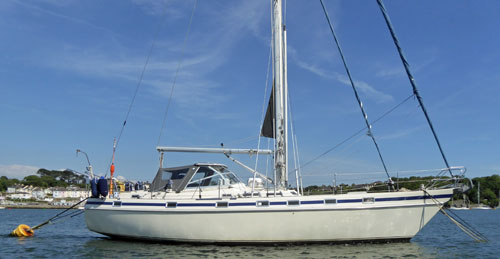
Does anyone recognise the make/model of this handsome centre-cockpit cutter moored on the River Tamar at Saltash, England?
If so, please let me know
by clicking here...
And remember, the first person to convince me of the correct identification of the boat, gets a free eBook of their choice!
We provide a free platform for owners (but not brokers) to advertise their sailboats for sale on our website. These are the latest submissions:
The full list of monohulls and multihulls currently for sale can be seen at
cruising-sailboats-for-sale.
It's always worth taking a look at what visitors to sailboat-cruising.com are getting rid of. Remember that one man's junk is another man's gold!
Among other items this month, we have:
- Cutlass Bearings;
- 44lb Delta Stainless Steel Anchor;
- Lewmar Chain Stopper;
- Secondary Winches, Barlow Size #27;
- Primary Winches, Barlow Size #33;
- Land's End Wool Sweater;
- Canvas Sailing Hat;
- Marine SSB Radio Equipment;
- Mainsheet Traveller;
- Galvanized Chain;
- Storm Jib/Staysail;
- C Plath Marine Sextant;
- Composting Toilet (New & Unused);
- Propellers;
- 3-Bladed Maxi Prop;
- Barient 23ST 2-Speed Winches;
- Stainless Steel Swim Ladder
Take a look at these and all the other stuff at
used cruising gear for sale...
And finally...
If you know anyone who might be interested in the contents of this newsletter, please forward it to them. It's not secret!
And this newsletter can be a two-way thing. If you've read anything you'd like to comment on, or perhaps there's an event you'd like to see announced in a future newsletter, then please let me know.
See you next month!

Dick McClary
Go to Sailboat-Cruising.com's Home Page...



